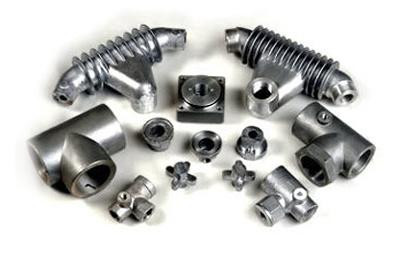Iron casting is the procedure of dissolving pig iron in a heating system and pouring the molten iron right into a mold up until it hardens. The iron therefore gotten is used in various commercial applications. The actors iron is weak, has wonderful strength-to-weight proportion, weak in tension and also good compression strength. The composition of actors iron and the method of manufacture play a major duty in figuring out the features of this alloy.
Pig iron is the sort of iron utilized for casting iron. Casting method is used to make components as well as items that cannot be gotten by other manufacturing processes as a result of their distinct layout and also size. Standard spreading approaches comprise of lost-wax spreading, plaster mold and mildew casting as well as sand casting. The modern-day casting procedure is subdivided into two major groups: expendable and also non-expendable casting. Expendable spreading utilizes short-lived, non-reusable mold and mildews. Nevertheless, in instance of non-expandable spreading, mold and mildews require not be changed whenever.
There are many Fundamental processes involved:-
Getting casting geometry and pattern production
Firstly, the needed design is prepared by the designers in examination with the consumers making use of CAD or various other computer assisted layouts. Based on the plan, the pattern is prepared. The pattern is a physical version of the spreading utilized to make the mold. It is constructed utilizing sand, metal or plastic. When the pattern is taken out, the imprint provides the mold and mildew cavity.
This tooth cavity is made use of to fill up the molten iron for casting. If the spreading requires to be hollow, as in the case of particular components like pipe installations, added patterns, such as cores, are used to form these dental caries. It is necessary to bear in mind the pattern must be somewhat bigger than the ended up product, a difference called tightening allowance.
Coremaking
Cores are patterns that are made from sand as well as placed right into a mold cavity to form the interior surface of the spreading. Thus, the casting gotten is the void area between the core and mold and mildew dental caries surface. The cores are typically put into the spreading box after removal of the pattern. Whenever feasible, designs prevent using cores as they amount to the set-up time and also therefore incur greater price.
Molding
The next step in the procedure entails preparing the mold for obtaining the molten iron. The mold and mildew together with core with a supporting frame is positioned around the pattern. The pattern is withdrawn leaving the mold and mildew tooth cavity as well as core. As soon as the pattern is removed, the mold and mildew is shut.
Thawing as well as putting
The pig iron is liquefied in a capola furnace in between 1,150 to 1,200 ° C (2,100 to 2,190 ° F), which is about 300 ° C (572 ° F) lower than the melting point of pure iron. When the iron melts at wanted temperature level, it is transferred as well as poured right into developed mold and mildews. The molten iron is entrusted to set.
Cleaning
When the actors iron solidifies, sand, range, and excess steel are gotten rid of. The spreading is divided from the mold and mildew and moved to the cleaning section. Burned-on sand and also scale are eliminated to boost the surface look of the spreading. Excess steel in the kind of fins, wires, gates, etc. is likewise gotten rid of. Casting might undergo more handling like warmth treatment in addition to inspection and machining may be done on actors iron.
When the procedure is full as well as impurities are removed, completion product is not one hundred percent iron. The chemical make-up like carbon as well as silicon makes up the composition of cast iron in numerous portions. Anything over 2 percent of silicon is known as gray actor’s iron, while a minimal quantity creates white actors iron.
